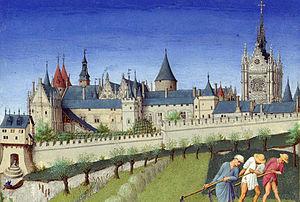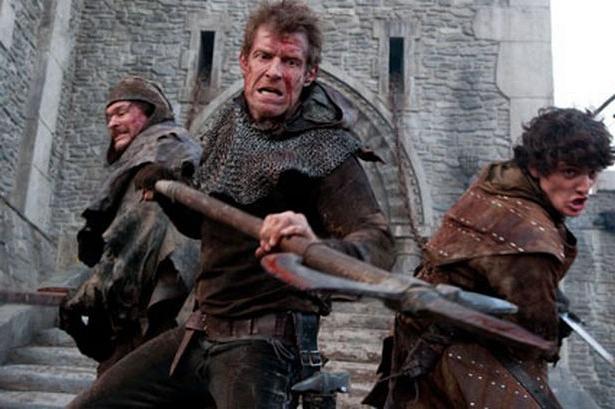The basis of European medieval culture laysynthesis of Christianity, the ancient heritage and features inherent in barbarian peoples. The characteristic features of the era are the rejection of direct experimental knowledge of the nature of the world and man and the priority of religious dogmas. Because of the highlighting of the Christian explanation of the device of the Universe and the stagnation of the development of many sciences of the century from V to XIV, they are often called "dark". Nevertheless, even during this period, man’s knowledge of the world is expanding, the Greco-Roman tradition of education continues, albeit in a strongly modified form, and the “seven free arts” still exist.
The basis of knowledge

The beginning of the Middle Ages is considered the fall of the WesternRoman Empire in the 5th century. Naturally, the emerging nations and states perceived much of the open, created and meaningful during the period of Antiquity. The basis of the education system was not an exception: the disciplines that, in the opinion of the ancient Greeks and Romans, were necessary as a preparatory stage preceding the study of philosophy. The seven liberal arts included grammar, dialectic (logic), rhetoric, arithmetic, geometry, music, and astronomy. The first three were united in a trivium - the system of humanities. Arithmetic, geometry, music and astronomy constituted a quadrivium — four mathematical disciplines.
At the time of Antiquity
Quadrivium took shape in the period of late Antiquity.The main science was considered arithmetic. It should be noted that in the times of ancient Greece and Rome, the free arts were those occupations that slaves could not do. They were associated exclusively with mental activity and did not require much physical effort. Art was understood not as an artistic representation of the world, but as a means of practical comprehension of nature through observation.

Trivium finally formed later, in the early Middle Ages. He became the first stage of education. Only after studying the disciplines of the trivium could one proceed to a quadrivium.
Church and ancient heritage
In the Middle Ages, the basis of knowledge of the universe andworldview lay Christianity. Church leaders opposed faith to reason, preferring the first. However, many moments of dogma could not be explained without using some elements of ancient philosophy.
For the first time to combine the Greek-Roman knowledge andChristian understanding of the world tried Marcian Capella. In his treatise “On the marriage of Philology and Mercury,” he divided the seven liberal arts into trivium and quadrivium. Capella briefly spoke about all the disciplines included in this system. Trivium is described for the first time.

Further development of trivium and quadriviumengaged in Boethius and Cassiodorus (VI century). Both scientists have made a huge contribution to the formation of the education system in the Middle Ages. Boethius developed the basis of the scholastic method. Cassiodorus in his estate in Italy founded the “Vivarium”, the components of which — the school, the library, and the scriptories (the place where books were copied) —was later made mandatory in the structure of the monasteries.
Imprint religion
Seven Liberal Arts in the Middle Agestaught to the clergy and presented in accordance with the needs of the church. The study of disciplines was, rather, superficial - only at that level that is necessary for understanding Christian dogmas and the administration of services. All seven liberal arts in the Middle Ages were comprehended with a purely practical purpose and in a rather narrow framework:
rhetoric is needed when compiling church documents and writing sermons;
grammar taught to understand Latin texts;
the dialectic was reduced to formal logic and justified the tenets of faith;
arithmetic taught elementary counting and was used in the process of mystical interpretation of numbers;
geometry was required to build the drawings of the temples;
music is necessary for the composition and performance of church hymns;
astronomy was used to calculate dates of religious holidays.
Education in the Middle Ages

In the early Middle Ages, seven freearts were studied only in monastic schools. The bulk of the population remained illiterate. The philosophical legacy of Antiquity was considered almost the basis of many heresies, and therefore the study of disciplines was reduced to the above points. However, not only Christian texts were carefully copied in scripts, but also works, poetic and philosophical, by ancient authors. Monasteries were a stronghold of education and scientific knowledge.
The situation began to change in the X century.From this century begins the heyday of medieval culture (X-XV centuries.). It is characterized by a gradual increase in interest in the secular aspects of life, in the person’s personality. Appear cathedral schools, where they took not only representatives of the clergy, but also the laity. In the XI-XII centuries. first universities appear. Cultural life is gradually moving from monasteries and churches to urban centers.
The transitional period between these two epochs can be considered the period of the Carolingian Renaissance.
Seven Liberal Arts under Charlemagne

By the end of the eighth century.The Frankish state united the vast territories of Western Europe. The empire reached its heyday during the reign of Charlemagne. The king realized that to manage such a state is possible only on the condition of creating a well-functioning apparatus of officials. Therefore, Charlemagne decided to make changes to the existing education system.
At each monastery and each church wereopen schools for the clergy. In some, the laity were also trained. The program included seven liberal arts. Their understanding, however, was still limited to church needs.
Charlemagne invited scholars from other countries, organized a school at the court, where grandees studied poetry, rhetoric, astronomy and dialectics.
The Carolingian Renaissance ended with the king’s death, but it was the impetus for the subsequent development of European culture.
The seven liberal arts in the Middle Ages, as in Antiquity, were the basis of education. They were considered, however, only in a narrow framework of practical application for the needs of the Christian church.










